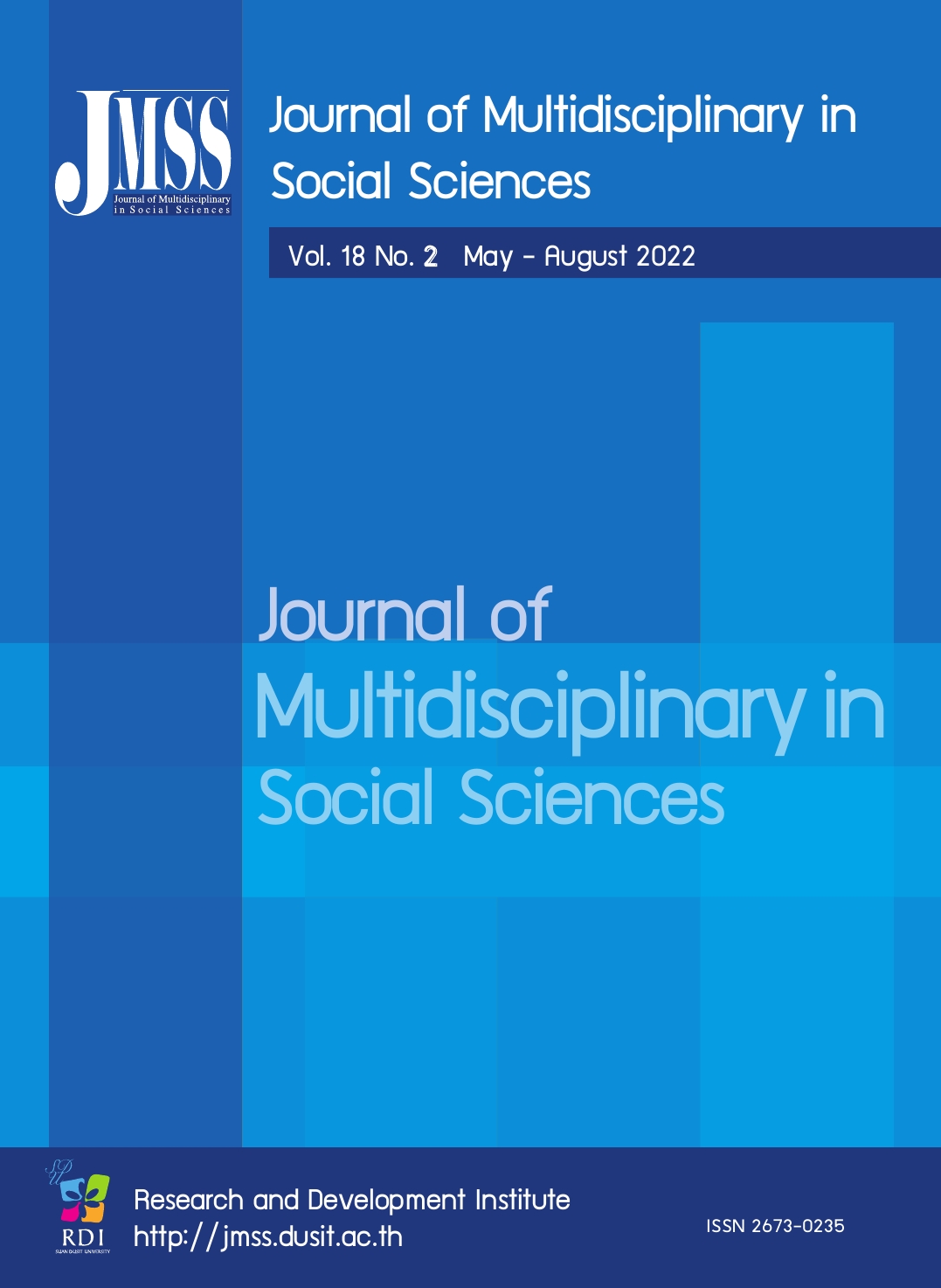Factor that influencing tourist behavior intentions of health tourism in the Nanning City of China
Keywords:
Health Tourism industry, Development in the Nanning City, Health Tourism BehaviorAbstract
In 2017, Nanning was designated by the National Tourism Administration and the State Administration of Traditional Chinese Medicine as one of the first 15 national TCM health tourism demonstration zones in the country. How to rely on the relevant government policies to enhance the development of Nanning's health tourism industry is a topic worthy of research. Therefore, this study takes Nanning City as the research scope, takes Hierarchy of Needs and Marketing Mix as research variables, explores the influence of tourists' behavior intentions in Nanning's health tourism, and then puts forward suggestions for the development of Nanning's health tourism industry. The travel willingness and feedback of health tourism customers are important reference factors for business operation and profitability. Government departments can use these results to improve policies related to health tourism. By strengthening policy implementation, promoting and attracting enterprises to develop the health tourism industry in the local area will help promote the development of “health tourism”. The research sample group is domestic tourists traveling to Nanning City. The questionnaire method was used to conduct a questionnaire survey of 500 domestic tourists to Nanning, and the data obtained were analyzed using SPSS statistical procedures. Data analysis is mainly divided into two parts. First, use the method of descriptive statistics to quantitatively describe the Demographic Characteristics of the Respondents (features). Secondly, through reliability analysis, validity analysis, difference analysis, correlation analysis and regression analysis to determine the relationship and meaning of each concept. At the same time, the research hypothesis is tested. The results show that the physiological needs, safety needs, respect needs and self-realization needs of tourists have a significant positive impact on the willingness of Nanning's health tourism behavior. Tourist locations, production services, product prices and marketing methods also have a significant impact on Nanning's health tourism. Willingness to behave has a significant positive impact. Based on the conclusions drawn from SPSS data analysis, the author puts forward the following suggestions for the development of the large health tourism industry in Nanning: (1) The government should improve the relevant policy system and optimize the development plan for the large health tourism industry. (2) Actively expand the promotion of Nanning's health tourism and increase investment promotion. (3) Innovate the large health tourism industry model and build a large health tourism brand. (4) Improve the service management system and improve the quality of supporting services for health tourism.
References
Chuanchom J., Popichit N., Tananchat, A. & Srisorn W. (2021). Factors Influencing Thai Tourists’ Decision Making to Choose Dvaravati Civilization for Tourist Attractions. Journal of Multidisciplinary in Social Sciences,17(1), 28-36.
Cohen, E. C. E. (2008). Medical tourism in Thailand. AU-GSB e-journal, 1(1), 24-37. Retrieved from http://www.assumptionjournal.au.edu/index.php/AU-GSB/article/view/381.
Da Yong, H. & Fang, C. (2015). A Summary of Domestic and International Tourism Satisfaction Research. Journal of Chongqing Technology and Business University (Social Science Edition), 2, 49-55.
Hao W., & Qing Lei, L. (2019). Overview of Thailand Tourism Research - Based on the literature analysis of CNKI. Journal of Guangxi Economic Management Cadre College, 3, 67-75.
Hui, Z., Hui, L., Juan, X., & Xiang, Y. G. (2019). Research on Xinyu Rural Tourism Development Based on Marketing 4P Theory. Journal of Xinyu University, 24(6), 14-18.
Hui Fang, L., Xiao Zhong, Y. & Hui, L. (2017). Research on the Basic Characteristics and Development Model of Health Tourism. Journal of Wanxi University, 33(5), 122-127.
Janchai, N. (2016). Efficiency of tourism development from government policy to practice case study: Hua Hin, Thailand. SDU Research Journal Humanities and Social Sciences, 12(2), 191-211.
Jing Ci. (2021). Research on the revival strategy of cultural tourism industry in the post-epidemic era-Take Zhenjiang, Jiangsu as an example. Journal of Taiyuan City Vocational and Technical College, 2, 29-31.
Kremer, W., & Hammond, C. (2013). Abraham Maslow and the pyramid that beguiled business. BBC news magazine, 31.
Lan Yue, Z. (2019). The Enlightenment of Thailand's Medical Tourism Development Model to Yunnan's Medical Tourism. Kun Ming:Yunnan University of Finance and Economics.
Lin, G. (2017). Accelerate the integration of health-preserving tourism and promote the development of tourism in Guangxi. Guangxi Economy, 3,1.
Lu, Z. (2020). Opportunities and risks of the deep integration of “tourism + health” in the post-epidemic era. Quality and market, (4):66-68.
Maslow, A. H. (1943). Dynamics of personality organization. II. Psychological review, 50(6), 541.
McIntosh, R. W., Goeldner, C. R., & Ritchie, J. B. (1995). Tourism: principles, practices, philosophies (7th Ed.). John Wiley and Sons.
National Bureau of Statistics. (2020). Organized by Foresight Industry Research Institute. Eastern Fortune, Retrieved from https://baijiahao.baidu.com/s?id=1699632088889537196&wfr=spider&for=pc.
Peng, L., Yongming, Z., & Huiyue, Y. (2020). Differentiation and analysis of related concepts of health tourism and international research progress. Tourism Forum, 13(1), 69-81.
Qian Yan, L. (2021). Research on opportunities and countermeasures for the development of health tourism industry in the post-epidemic period. Jiangsu Business Theory, 10, 62-64.
Ruangkalapawongse, S. & Ruangkalapawongse, A. (2016). Cultural Tourism Management by a Participative Approach in KohKret Community Amphur Pak Kret, Nonthaburi. Journal of Multidisciplinary in Social Sciences,12(3), 113-132.
Rui, Z. (2018). Research on Thailand Tourism Development Model. Kunming:Yunnan Normal University.
Yongwen L.,Yuan, L., & Rui, L. (2021). On health tourism and its industrial development. Journal of Nanyang Normal University, 1, 48-53.
Yu, W. (2005). Study on Enhancing the Competitiveness of Guangxi Tourism Industry Against the Background of CAFTA. Gui Lin: Guangxi Normal University.
Yu Xuan, X., Min, F., & Chun, L. W. (2021). Research on Global Tourism Marketing Strategy Based on 4PS Marketing Theory——Taking Shanyang County, Shaanxi Province as an Example. Rural Economy and Technology, 5, 107-108,138.
Downloads
Published
How to Cite
Issue
Section
License

This work is licensed under a Creative Commons Attribution-NonCommercial-NoDerivatives 4.0 International License.








